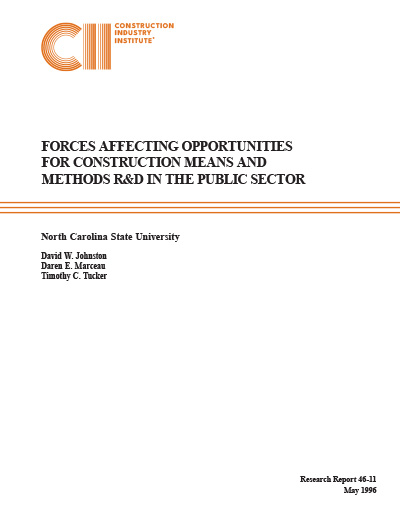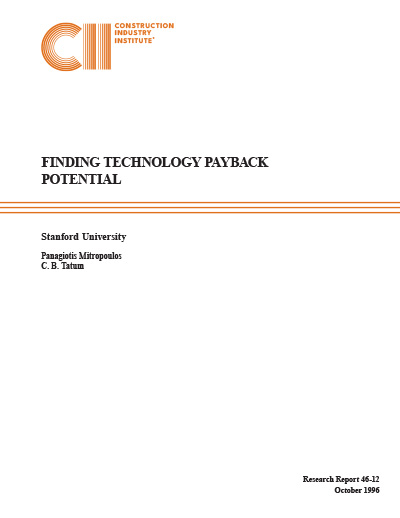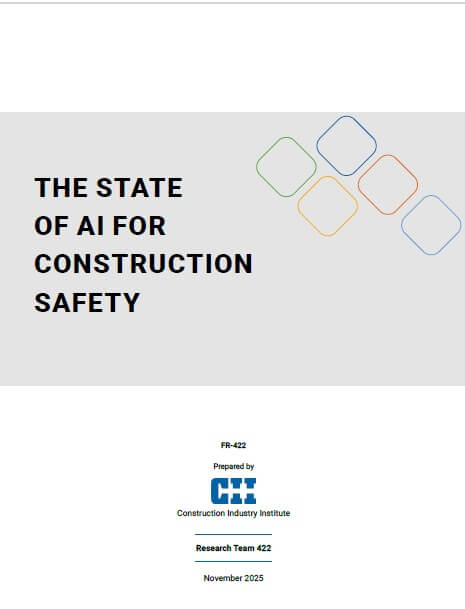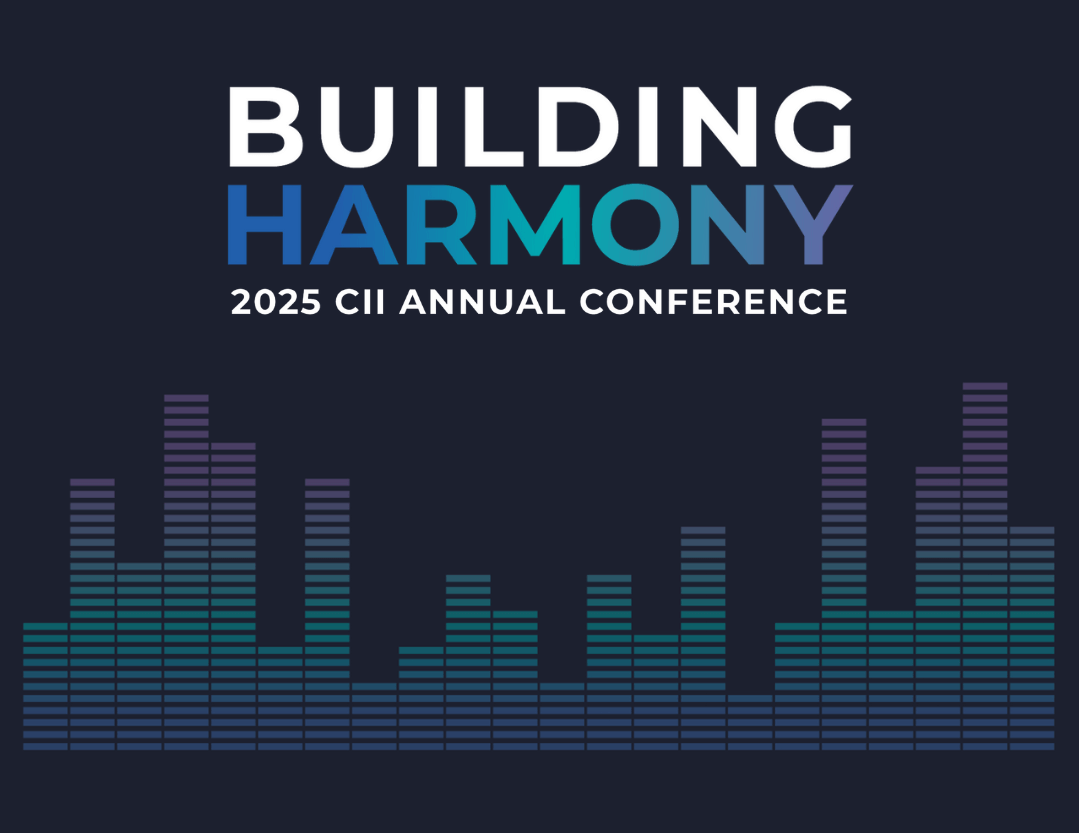
Forces Affecting Opportunities for Construction Means and Methods R&D in the Public Sector
During 1993, the U.S. construction industry, including new construction, rehabilitation, and renovation, produced $800 billion in project revenues, or 13.6% of the gross domestic product. It is the largest manufacturing industry in the U.S. and employs 10 million people.
The average new construction project costs are distributed approximately 50% to materials and 50% to construction labor and equipment. The proportion devoted to labor in maintenance and rehabilitation projects is generally greater. Although research related to the entire pie is often cited as under-funded, the emphasis on research related to construction means and methods (the labor and equipment half) appears even less well supported proportionally than research for materials and design criteria (the materials half). Inadequate R&D on construction means and methods results in a lower availability of technologies for workers to apply, and thus, lower productivity, quality and effectiveness.
The Construction Industry Institute (CII) has identified a need to advance construction through the development and implementation of technology. The CII Technology Strategy Task Force was formed to develop a strategy for the industry to follow in making this advance. The earlier CII Technology Survey Task Force concluded that most construction research is aimed at the development of material and design criteria. Additionally, it concluded that a definite need exists for an industry-backed strategy to encourage more groups to focus efforts on construction operations research, or in alternate terms, construction means and methods R&D activity and funding.
In response to the problem and need, a research project was funded by CII under the guidance of the Technology Strategy Task Force to study forces affecting the level of research activity related to construction means and methods R&D in the public sector. The specific objectives were:
- To identify forces affecting development of advanced means and methods technologies for contractor use.
- To increase understanding of the barriers to construction technology R&D.
- To provide information, ideas and data contributing to the formation of a strategy to advance construction through means and methods technology R&D.
Several research methodologies have been employed to achieve the objectives. An initial literature review was conducted to identify primary sources of printed information and to identify the major public sector organizations that have an involvement in construction research. In order to evaluate the level of current activity related to construction means and methods research, several types of surveys were employed. In cases where there were a large number of similar organizations, namely universities and state departments of transportation, a mail survey was utilized. In the case of federal agencies, direct contact by visit or by telephone was used to seek the desired information.
Finally, the federal government’s programs for technology development and transfer, the agencies, committees and groups active at the federal level, and major programs enacted by Congress were studied and summarized. From this data and information, recommendations are presented to the industry on possible methods to improve the level of funding and activity for construction means and methods R&D.
The findings of this study include the following conclusions and recommendations:
- The level of funding for construction-related research is frequently cited as being low. However, funding of research for construction means and methods is even more neglected, especially considering the potential for cost benefit. Although about 50% of the project cost is labor, only 7.1% of the Civil Engineering-related research is construction-related and only 2.5% is directed to means and methods. Construction means and methods R&D funding is only 0.0063% of construction expenditures, $63 per million or about the total cost of one labor hour per million dollars expended.
- Although facility designers don't generally fund research, they are good advocates for research funding for design and materials needs by government agencies.
- Funding agencies, as representatives of the owner, have traditionally focused on research to support the owner and designer in specifying material performance and supporting development of design criteria. The construction process has been viewed as the responsibility of industry.
- Contractors don't generally fund research, but they need to participate and to use some of their influence to get agencies to understand the need for and fund construction means and methods R&D that will ultimately benefit the public owner, the taxpayer, through lower initial and long-term costs.
- More emphasis is needed on construction means and methods research to provide improved and effective technologies for field forces and thereby increase their effectiveness.
- Funding agencies need to better understand the economics of project delivery in prioritizing research, and to place more emphasis on the construction process. Savings in initial labor costs from use of effective technology could be invested in higher quality materials to reduce life-cycle costs. The proportion of labor cost for maintenance and rehabilitation is generally higher than in new construction and also warrants increased research.
- University construction programs must stress the importance of engineering the construction process including more emphasis on education and research concerning construction means and methods technologies and methods for identification and evaluation of technologies.
- Means and methods technology use must be effectively designed into the construction process by the contractor. Contractors must place more emphasis on engineering the construction process; it is not possible to manage a process that has never been designed.



